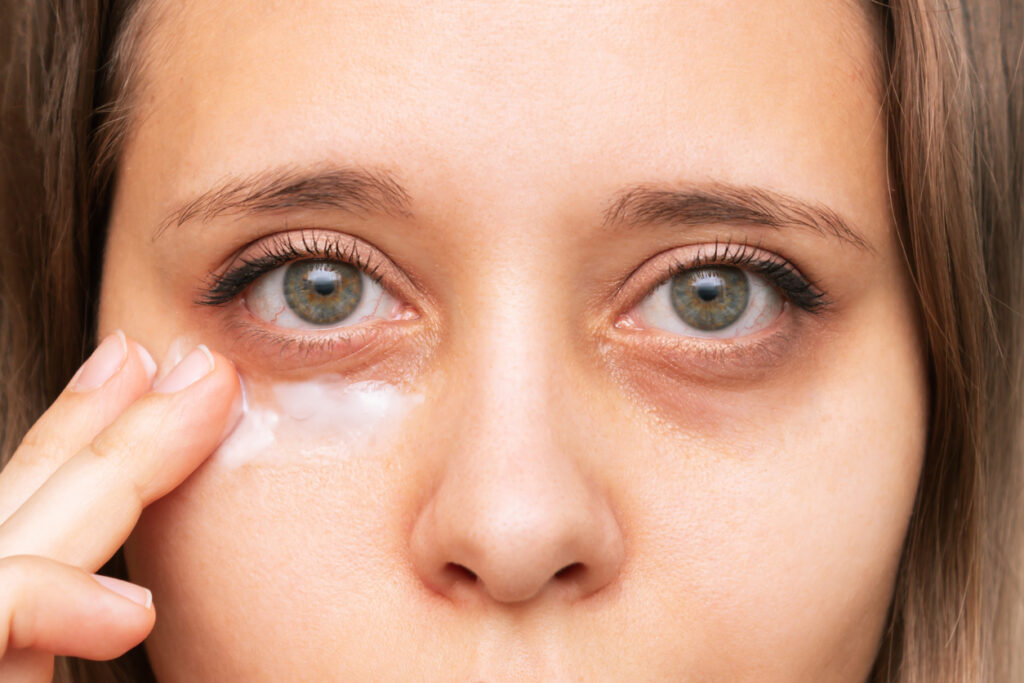Eye bags, a common cosmetic concern, are usually associated with ageing but can be influenced by various factors. Understanding what causes these under-eye changes and how they develop over time, along with effective prevention strategies, can help in managing their appearance.
Causes of Eye Bags

The formation of eye bags primarily results from changes in the skin’s structure and surrounding tissues as we age. Key factors include:
1. Loss of Skin Elasticity: With age, the skin loses collagen and elastin, the proteins responsible for its firmness and elasticity. This makes the skin under the eyes thinner and more susceptible to sagging, creating the appearance of bags.
2. Fat Redistribution: Fat deposits around the eyes help support the eyelids. As we grow older, these fat pads can shift downward due to gravity and weakening of the membranes holding them in place, leading to puffiness and bulges.
3. Fluid Accumulation: Fluid retention under the eyes can cause swelling and puffiness. This can be due to various factors including diet, sleep patterns, and overall health.
4. Genetics: Hereditary factors can play a significant role in the development of eye bags. Some people might be predisposed to having more prominent under-eye changes.
5. Lifestyle Factors: Poor sleep, high salt intake, dehydration, and smoking can exacerbate the appearance of eye bags by contributing to fluid retention and weakening of the skin.
Development Over Time
Eye bags tend to develop gradually. Initially, they may appear only in the morning due to fluid build-up overnight and then recede as the day progresses. Over time, as the skin becomes less elastic and fat redistribution continues, the bags can become a more permanent fixture.
Prevention and Management

While completely preventing eye bags might not be possible, especially due to genetic factors, their appearance can be managed with lifestyle adjustments and skincare routines:
1. Skincare: Using products that contain retinol, peptides, and vitamin C can help increase collagen production and improve skin elasticity. Regular use of moisturising eye creams can also help in strengthening the delicate under-eye skin.
2. Healthy Diet: Reducing salt intake can decrease fluid retention, while increasing water intake helps keep the body hydrated and reduces puffiness.
3. Adequate Sleep: Ensuring a good night’s sleep on a regular schedule helps prevent fluid build-up under the eyes. Keeping your head elevated with pillows can also aid in reducing overnight swelling.
4. Sun Protection: Wearing sunscreen and sunglasses protects against UV radiation, which can break down collagen and elastin more rapidly. We love OBAGI SPF 50
5. Professional Treatments: For those looking for more significant changes, professional treatments such as fillers, lasers, or even surgery can be considered. These methods can help in reshaping the under-eye area and improving skin texture:
UNIFACE
RADIOFREQUENCY
POLYNUCLEOTIDES
EXOSOMES
In conclusion, eye bags are a natural part of ageing but can be influenced by lifestyle and environmental factors. Understanding these influences allows for better management through preventative care and treatments that target the underlying causes. By integrating good skincare habits, proper diet, and adequate sleep, one can significantly mitigate the severity of eye bags and maintain a more youthful appearance around the eyes.
As always prevention is better than cure.
Back to blog